Future of Work

How has the workplace changed, and how is it set to change further? How has the concept of work itself changed over the past decades, and what can we expect in the days to come? There has been a sea change, and more such transformations are set to come, shaking the very foundations of the concept, whether it is the employee, employee expectations or work conditions. Corporate Citizen brings you a riveting discussion by corporate leaders on these concepts of work. The session panellist were Arun Thuyamani, HR Leader, Sodexo (Moderator); Rajesh Manik, Director-HR, Deloitte and Devika Date, Associate Director-HR, PwC, at the recently held conclave in Pune

Arun Thuyamani: Tell us (Rajesh Manik) about the revolutions which businesses has witnessed and how has it been?
Rajesh Manik: Broadly, businesses has seen three generations or revolutions. First, the industrial revolution, then the information revolution, and thirdly, the social or digital revolution. People who worked in the industrial revolution are grandparents today. That was the generation where people took up jobs for survival. There was so much loyalty in that generation, that they never left the organisation till they retired. People also looked for government-owned organisations and did government jobs.
A generational shift
Later came the information generation. In the earlier generation, knowledge was not readily available. You had to read books, you had to remember, you had to learn by yourself and learning happened. Whoever had that knowledge was the king. In the information generation, due to the internet and computers, information became freely available. The generation that worked during this time was known as Gen X. Gen X never worked for survival, because survival was taken care of by their parents. So they worked to increase the standard of living. It looked for new houses, new cars, education for children, lifestyle changes.
In the industrial revolution, the earning member, typically the father would get a salary in an envelope at the beginning of the month, he would take the family for grocery shopping and at the end of the day, go to an Udupi restaurant and have masala dosa and a good outing and that could happen only once a month. That’s how that generation grew up.
Focus has changed
In the information generation, people focussed on improving the standard of living, having options to eat out, travel and explore places. In this generation, the workplace also changed, so the kind of offerings, benefits, pay packages, infrastructure, all of that improved. Now, when would one employee change from one employer to another? When the other company was offering higher pay or a better role or better facilities or infrastructure. Then people thought loyalty was dipping because nobody was working for 15-20 years.
After the 2008 global economic crisis came the digital or social revolution. Everything after that point of time became digital. A social revolution happened because connectivity between people increased. People started connecting via digital technologies. This generation which is called Gen Z, made up of those born 1996 and later. This generation is not working for survival, because their grandparents took care of it. They are not working for a standard of living because their parents took care of it. Gen Z is working on focussing on something different—the quality of life. They are not going to wait with that level of patience and perseverance which Gen X or the baby boomers had. This generation wants everything instantly. For us, collaboration was across the round table, but for Gen Z collaboration is global. They want feedback immediately and not at the end of the year during the performance review.
It is very important to understand how there has been a generation transition in the last 50 years and then understand what is the kind of workforce you will be a part of as MBAs, and what challenge lies ahead.
Arun: The latest we hear about is Artificial Intelligence and it is going to cut jobs. But according to the World Economic Forum in 2018, there was an expectation of a million job cuts and also two million jobs which would be created. Tell us (Devika Date) about your thoughts on what will be the future of work like?
Devika Date: The world is changing and it is a holistic world. For the word coach, there is a word training, and that is more the in-thing. It is more holistic—organisations are today talking about wellness, they are talking about care. One of the values of the organisation that I come from is care, and that is one value which is very dear to all of us in the organisation globally. That is what I mean when I say times are changing. Probably during the industrial revolution, these things were not heard of earlier.
Agile entities
Today organisations are focussing on diversity, inclusiveness and flexibility. Flexibility is the word of today, while organisations are growing, workplaces are shrinking. We have a situation in our organisation when we have no place for employees to sit, and we are very fine with employees working from home. These are the key changes that are happening in organisations, vis a vis what they were earlier. Wellness, flexibility, diversity and mutual inclusion-we are going to talk more on these concepts.
Rajesh: Future, as a word itself is very ambiguous and there could have been predictiveness to it a decade or two back. There is no predictiveness to the word future now. A decade ago, popular professions were engineering or MBA. Today, people have diversified into so many professions and skill-sets that the whole concept of the future has changed. In my time, we only had BA, B.Com and B.Sc.; today you have numerous degrees to opt from.
When we look at the future of work, we believe that the definition of work itself will undergo a change. The entire concept, framework of the word work is likely to undergo a change. Who are the people who will be working, that itself will undergo a change. So that is the second part –work and the people who work and the third, how do you manage this talent? One thing that we have seen from our research is that the concept of the word career, that itself will undergo a change. Earlier, the word career was about, you finish your curriculum, you join as a trainee, then you become an assistant manager, deputy manager, then manager, senior manager and so on. The concept of career will undergo a change where it will be more about experiences and the projects that you undertake as compared to the hierarchy of designations.
I remember this incident of 2012, I was working with the ING Group, we embarked on a journey on how do we transform an organisation to a great place to work. We did some research on what the best employees globally exhibit and how do we imbibe that and what kind of cultural changes are required and all of that. When we are looking at creating a great place to work or bring about a cultural change, learning is an integral element of that culture change. Now we have a department called the Training Department. Typically employees in the financial services don’t get time to undertake such trainings because many of the employees’ work is linked with the stock market and during the market hours they cannot focus on learning-related sessions. Any training that can happen is after work hours and weekends when employees don’t want to work, so we don’t encourage that kind of culture.
We had created different employee groups. One employee wrote on the board: ‘training is for dogs’; the next line was, ‘development is for people’. When you look at both the statements you understand the essence of it. There was a generation where you go for a training programme twice a year, once a year – today we are talking about learning and development.
“When we look at the future of work, we believe that the definition of work itself will undergo a change. The entire concept, framework of the word work is likely to undergo a change”
- Rajesh Manik

App way to learning
Deloitte conducted a survey which studied 7000 millennials from 54 countries. Some of the findings are that learning for millennials is real time, all the time and on the go, at your own place and at your own pace. Secondly, there has to be some immediate shift to mobile learning as against classroom learning or conventional learning. Thirdly, while the millennial generation is looking for directions from the organisation, the employee wants to have control over his or her learning journey. It is not that he will do whatever the organisation is asking the employee to do. You want guidance from the organisation and you want support from the organisation. Fourthly, if I have a meeting with Arun on Merger and Acquisition today evening and a meeting on Artificial Intelligence with Devika tomorrow, both these meetings will show on my calendar. We have ties with a global organisation, a learning organisation. What it does is, it sends their learning or programme or content with our calendars through integration, wherein I will get a capsulated content on both these topics before my meetings. So, if I have a meeting with someone, I will get some content, a day or two before, related to the meeting. This is like learning on the go. These are curated content. This is the kind of era we are stepping into.
Arun: At Microsoft, some time ago, there were various versions of trainings being carried out. There were various versions of new products being released and subsequent sessions that made sure that new learners actually had access to this information. One of the things that we did with Gen X, Gen Y and Gen Z is to study the timespan and on-the-go platform was to be created. We moved from the traditional laptop-based training and partnered with an external agency, which gave us an app.
We made sure that the timespan of these sessions was not more than four minutes. Earlier, it used to be day-long training and at the end, there was an attendance report to be signed. We brought it to two hours of four-minute sessions. These four minutes can be split based on the time that we have. It could be four videos of four minutes, but we made sure that there was a stop at four minutes. So the attention span matched with what we actually wanted to communicate, captured in that particular time. This is how transformation is happening.
“One of the values of the organisation that I come from is care, and that is one value which is very dear to all of us in the organisation globally. That is what I mean when I say times are changing”
- Devika Date

Multi-hued world
Devika: To add to what Arun just shared, PwC, USA did a research for almost two years to understand how the corporate world will look like in 2030. There are concepts like green world innovation where organisations’ USP is taken care of, CSR, values, etc. A lot of employees looking for jobs prefer organisations where their values match. A green world is where organisations emphasise a lot of importance on values and care elements. Then you have a yellow world-these are all assumptions, of course, of how it will be like in 2030, and it is very interesting. In the yellow world, human touch has decreased. This is contradicting the red world. While we are talking about automation, AI, ML, this school of thought in the yellow world says human touch will continue to be there. A blue world is where the corporate is the king. Today, we know what the blue world is like, where the organisation is the king. This particular research which went on for two years, actually concluded that these are the four different kinds of segments in which corporates will be placed. They will probably embrace one school of thought. They are forecasting that in 2030, that’s how the workplace will look like.
Virtual, remote workplace
Arun: In future, working at workplaces might be virtual, remote, it may or may not be in a physical office. Even in a physical office, there may not be a defined space where we sit. It could be a hot-seat concept. Today, where people are travelling and people might be working from home, the best decision is to make sure that it is an open seat concept. Tell us (Rajesh) what Deloitte is doing in terms of workplace and the innovation process.
Rajesh: Every year Deloitte comes out with global emerging talent trends and one of the trends we are observing is what is going to be the future of the workplace. Earlier, we spoke about the future of work and now we are talking about the office. We will soon see an era where there would be the death of an office. You don’t really have to go to an office. We are talking about the virtual workplace, and this is transitioning much faster than the work from home concept. Because now, the kind of work that we do, doesn’t require people to come to the workplace or the office.
You look at the way the business model operates: there is sales, sales bring revenue, there is cost, cost includes people cost, infrastructure cost, and then there is profit. Now, if revenues are going to be challenged by macro factors, competition, then cost needs to be controlled. If costs are not controlled, then profits will get impacted. Every year an organisation carries a fixed cost from year to year. Assuming the revenue is 100, the cost is 60, and therefore profit is 40, Next year, the cost becomes 70 because you add increments, benefits, there are more additional costs coming in. If the revenue doesn’t correspondingly increase, then you don’t get the same or higher profit percentage. We are carrying too much of fixed cost percentage.
One of the ways organisations have dealt with that is by opening up offices in less prime locations within the same city. If this is not enough, they adopt shared services. Earlier, the same kind of routine jobs were done by different people at different offices in different cities. In shared services, you aggregate all that and bring to one place in one centre, say, Pune, Hyderabad, Jaipur or Indore where the overall costs are lower. However, now as we are progressing, we see that there is really no need for everyone to go to the office.
Work on a platform
Another thing you will find is true for organisations like PwC, a lot of our people work on the client side. However, everyone wants a work-desk. You give them a desk, you give them a phone line. Most of the time they are not in the office, so there is a cost attached to it. Hence the concept of a virtual workplace. Thirdly, from a future perspective, the workplace is where the worker is. Not the other way round, where the worker goes to the workplace. That means you don’t have to go to the office.
Suppose I don’t feel like eating at home, I go to a restaurant. But, if I don’t want to go to a restaurant because I want to watch cricket or a movie at home, then I will get food from outside. Suppose, there is no parcel or delivery service available, then what will happen? I will go out and get the food from the restaurant, come home and watch cricket. Today, you log in to Swiggy or Zomato, the food comes. It is an app world, it is a digital world and it is a platform-based world. In a platform-based world, you don’t have to go to any place, it operates in a platform format. So this is what will happen tomorrow. Just the way you login onto Facebook and LinkedIn, all that employees have to do is log in to a certain platform, sign in and start working from wherever they are.
One thing that we have experimented at Deloitte is adaptability at work – on where you should sit, what time you should come to the office and what time you should leave. We are working on a concept as to why should everyone sit in the same team, same department, and same business. We are working on a concept that you don’t refer a friend to work, instead sit in your workplace with your friend.
“In future, working at workplaces might be virtual, remote, it may or may not be in a physical office. Even in a physical office, there may not be a defined space where we sit. It could be a hot-seat concept”
- Arun Thuyamani
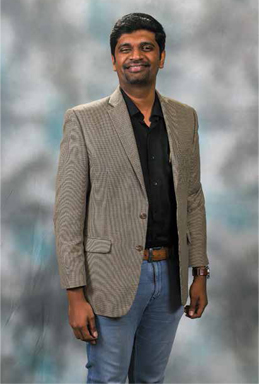
Different diversities
Arun: Now we will talk about diversity. The gender ratio is still somewhere between 34%-36% across all economies, all countries in the workplace, although women still constitute about 50 per cent of the population. Blame it on the education system, dropout ratios, or whatever. Every organisation has diversity initiatives. At Sodexo, we had 4,60,000 employees spread in 80 countries across the globe. We did a project two years ago. Dr Rohini Anand was part of this project. We took around 50,000 managers and defined teams which had a diversity of around 40-60 per cent. Then we took other teams; 80per cent of the teams didn’t have that ideal ratio of the 50 per cent hovering mark; only 20 per cent of the teams had this. We compared the productivity of the teams which had proper gender ratio vs the teams that didn’t have it. And it had a mix of highly skilled, semi-skilled and unskilled talent. We looked at parameters like employee retention, employee engagement, profits from a financial standpoint because business needs to be sustainable. We looked at the elements of people happiness. We looked at multiple elements and we found out that the teams which had the ideal gender ratio had an overall scoring of 10 to 14 per cent more across various elements than the other teams. So we need to be inclusive to support more women at the workplace, not just on the principle of diversity, or because it is the right thing to do, but also because it actually helps business.
Arun: How is (Devika) diversity, as a culture, coming up, and how are organisations and leaders embracing it?
Devika: Diversity is a very wide concept. Gender diversity is the most often talked about, and in India especially, organisations are very focussed on gender diversity. But apart from gender diversity, there are various aspects of the term diversity, like race, religion, physical attributes, etc. How open are we to work with people who are different from what we are? If you have to look at the diversity concept from a very macro point of view, I think that’s what it entails, how agile we are to look at something from somebody else’s point of view. In the HR fraternity, particularly in the recruitment space, we generally say that while an interviewer is interviewing a candidate, the decision whether to select a candidate or put the candidate on hold or reject the candidate is something that the interviewer decides in the first few minutes of the interview process. And that cannot be based on how the interview goes, but on how the candidate looks or how much you think the person is like you. We like people who are like us. I think that the entire process is based on that school of thought.
“Today, employees are fearless. When we do exit analysis, a lot of information is available through the mechanism as to why somebody would quit a workplace. A lot of employees take the break because they want to pursue further education”
- Devika Date
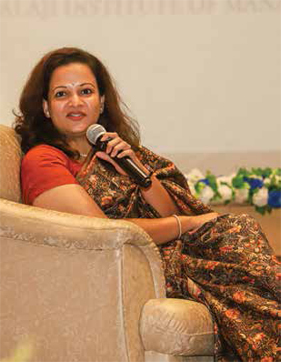
Scarce at the top
Talking about gender diversity, a lot of organisations probably will have healthy gender diversity at the entry-level. Gender diversity at PwC India today, across the whole firm, stands at 42% which is great. As you go up the ladder, above the manager level, the percentage goes drastically down. From 42 per cent, gender diversity above manager level goes down to the 20s. There is almost a 20 per cent downward trend happening as you progress up. Organisations have to look to bridge this gap. Manager upwards, typically it is the time when most women employees get married, move out, and other such responsibilities come in. Today’s organisations are striving and debating on how to ensure that the number of women employees at the board level in the management team go up. Because at the top-most level, we have a partnership model where the senior-most employees are partners. How many women employees are sitting at the partnership table? That is the question that will be haunting all of us. India has a long way to go, some organisations have started the journey towards their aim.
Rajesh: To add to what Devika said, typically all organisations have a corporate office, and then regional offices. So often it is observed that employees from offices which have a smaller population and not in the centre of business activity have very minimal representation in key initiatives. The diversity that Deloitte is focussing on is also to look at smaller offices and see that there are enough representations of people in anything to do with employees, business and strategic initiatives. That is one area where we are bringing in diversity.
“Today, a customer wants to experience, be it Amazon or Zomato, there is always a star rating. When it comes to the future of work, an employee needs to have an experience”
- Arun Thuyamani
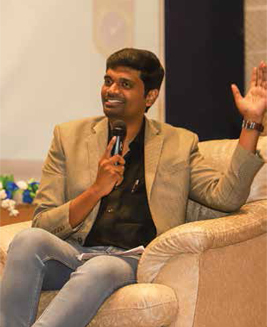
Diversity is inclusive
Secondly, the world is now about collaboration. In the collaboration world, every project should have all seniors in that project team. We need diverse participation, so people from different functions, grades, locations, need to be on the project team. The organisation is consciously focussing on the diversity of a project team or an engagement team so that there is enough representation and not just concentrated across some.
Thirdly, how do we encourage people who are differently-abled to come to work in a workplace? What kind of jobs can you give them, where can we support them, where can we give them meaningful jobs? That is also an area where a lot of organisations are working on. I do see that they are getting very good meaningful and cognitive jobs and not just the manual kind of jobs.
Fourthly, under diversity, there is something called unconscious bias. Today, we are also trying to sensitise our leaders and people on what could be unconscious bias. Unconscious bias could be the assumption that when somebody is single, they can work late. Another thing would be when women join the work after marriage, will she be able to work as she used to do earlier, will she handle more pressure and so on. We, in our mind, start creating such unconscious biases which probably may not be the case with that individual.
All organisations are focusing on gender diversity. After the age of 27- 28, women in career progression are definitely diminishing. Like PwC, Deloitte is driving it globally-there is an agenda we call the All Inclusive Agenda. We want to see a lot more women at the leadership level because that is an area where a lot is to be done. There is also focus on getting more women from the STEM fraternity (Science, Technology, Engineering and Maths) which predominantly for many years has been a man’s domain. That is also an area to focus on.
Arun: When we at Sodexo were doing the gender project, we figured out that there were a lot of gender-titles like office boy, male cook etc. We decided that we should change the name and it will work, but it didn’t. We had to do a complete changeover in the minds of people rather than on paper.
“We will soon see an era where there would be the death of an office. You don’t really have to go to an office. We are talking about the virtual workplace and this is transitioning much faster than the work from home concept”
- Rajesh Manik
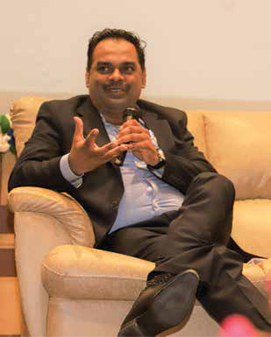
A question of experience
The next topic in the future of work is employee experience-from employee engagement, retaining and all those things, today, the word that we work upon is an experience. How is it different from engagement in the work world? It is something similar to what Rajesh said about what training and learning meant. Today, a customer wants to experience, be it Amazon or Zomato, there is always a star rating. When it comes to the future of work, an employee needs to have an experience. In the old days, when you had a problem with a certain thing, you would go personally and meet the person concerned. Then it came to a point where you have call facilities, where you can approach customer care. Today, nobody wants to pick up a phone, wait in a line or be told to do something. We want everything to be self-serviced. That is what the new generation wants, that is how we translate back to the employee workplace. Today, when we have 50,000 employees in 600 cities, we really don’t have an option to do any of those. We are left with an option where we create ways where all the employees can connect from anywhere. These changes that we bring in help employees solve their queries and the satisfaction that we measure is actually multifold because they are able to solve the problems without any human interaction.
Arun: Share your (Devika) experience at PwC.
Devika: I worked with the company for 11 years. When I joined PwC, the kind of employee experience we wanted to give PwC employees was very different from what we are doing today. Earlier, we used to have induction for four days. Nobody today has the patience to be in a closed room and get trained and where people talk on different topics on the first four days after joining the organisation. Also, managers are highly impatient, they tell us that we have recruited somebody and you cannot take him/her away for the first four days. In the fast-paced world, the way we do our onboarding has changed. Today, millennials are asking for constant feedback. The way we have managed our appraisal system, the mid-year review process, has undergone a phenomenal change. We have a system where employees get feedback on the go. Today, employees are fearless. When we do exit analysis, a lot of information is available through the mechanism as to why somebody would quit a workplace. A lot of employees take the break because they want to pursue further education, most of them are still trying to figure it out. That’s how today’s workforce has been changing. Eight years back, in PwC, that wasn’t the case. We were getting different answers than what we are getting today.
Wellness is another part where we are providing experience to our employees, we have tie-ups with centres where calls are answered, where you do not have to reveal your identity, you are counselled and coached, we have doctors on the go.
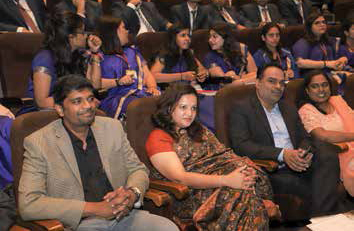
Arun: What kind of experience?
Rajesh: Experience, the word itself, has gone for a big change and so has the word engagement. Earlier, there was an era where organisations did small things and that’s all. They were called policies and benefits. Policies and benefits were defined. Now, we are getting into the concept where you are transitioning from policies to practices and in practices, you don’t have to be extremely rigid. In the practices’ world what happens is you try things to enhance employee experience. Experience has changed from pre-hire stage to post-exit stage.
A lot of experiences are not created by the HR team. They are ideated by the people themselves. We were working on how to make ING a great place to work and we had this monthly R&R award (recognition and reward) programme called Superstar. Every month we would have a star of the month award and the CEO would give the award in a monthly meeting. Employees came up with the idea, saying, why we don’t enhance the experience of these awards instead. They said, add a bouquet, add a cake and a greeting card. Don’t give these to the individual, send them to the family of that individual, which will reach the same day, pre-planned. The employee gets the trophy in the office. When he or she goes home, there used to be a cake, a card and a bouquet. The greeting used to say, “You have a Superstar coming home tonight”. This used to create so much emotion to the employee’s family that brought in a different level of experience to the employee.